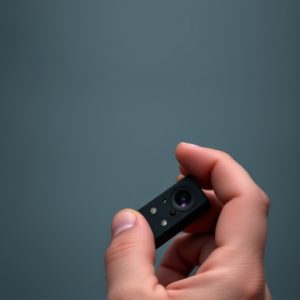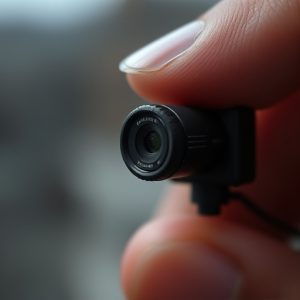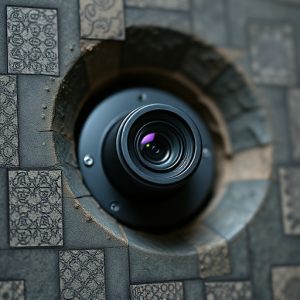Unveiling Mini Spy Cameras: From Secret Surveillance to Responsible Use
Hidden smallest spy cameras have evolved from niche tools to versatile devices with applications in…….
Hidden smallest spy cameras have evolved from niche tools to versatile devices with applications in home security, professional surveillance, and legal evidence. These tiny yet powerful tools offer high-definition video, wide-angle lenses, and extended battery life for discreet monitoring indoors and outdoors. However, their use is governed by strict privacy laws, so understanding local regulations and deploying them ethically is crucial before setting up a hidden smallest spy camera to avoid legal repercussions.
Discover the world of mini spy cameras—discreet devices with a wide range of applications. This article explores the legal implications, design marvels, and diverse uses of these tiny yet powerful tools. From enhancing home security to professional surveillance, learn how the smallest hidden spy camera can capture unseen moments. We’ll guide you through setup tips and ethical considerations, ensuring responsible use in an increasingly connected world.
Understanding Hidden Cameras: What They Are and Their Legal Implications
Hidden cameras, also known as spy cameras, are compact and discreet devices designed to capture video or still images without the subject’s knowledge. These miniature surveillance tools have evolved significantly, becoming smaller, more versatile, and easier to conceal than ever before. The smallest hidden spy camera is often integrated into everyday objects like watches, pens, or even electrical outlets, making them virtually invisible.
While hidden cameras offer benefits for personal security, surveillance, and evidence collection in certain contexts, they also raise important legal considerations. Privacy laws vary across jurisdictions, but many countries have strict regulations regarding the use of hidden cameras to protect citizens’ rights. Using such devices for invasive or unauthorized surveillance can result in severe legal consequences, including fines and imprisonment. It’s crucial to understand and comply with local laws before deploying any hidden camera, ensuring ethical and responsible use.
Unboxing the Smallest Spy Camera: Design and Features
Unboxing the smallest spy camera reveals a sleek and discreet device, designed to be almost invisible in any environment. This tiny yet powerful tool is engineered with modern technology, offering a range of advanced features. Its compact form factor allows it to fit seamlessly into various spaces, making it the perfect solution for those seeking discrete surveillance.
The hidden smallest spy camera boasts high-definition video recording capabilities, capturing crisp and clear images even in low light conditions. It’s equipped with a wide-angle lens providing an expansive field of view, ensuring no detail goes unnoticed. Additionally, its long battery life enables extended monitoring sessions without the need for frequent recharging, making it reliable and convenient for both indoor and outdoor use cases.
Applications of Mini Spy Cameras: From Home Security to Professional Use
Mini spy cameras, also known as hidden smallest spy camera, have evolved from being a niche product to a versatile tool with diverse applications. Their compact size and discreet design make them ideal for home security systems, allowing homeowners to monitor their properties without compromising aesthetics. These tiny cameras can be strategically placed in hard-to-see areas, providing peace of mind by recording high-quality video footage.
Professional industries have also embraced the power of mini spy cameras for various purposes. In business settings, they enhance surveillance and security, aiding in crime prevention and evidence gathering. Investigators, for instance, utilize these cameras to gather discreet evidence during stakeouts or covert operations. Additionally, their portability makes them suitable for event management, where they can capture candid moments without drawing attention, ensuring memorable recordings without intrusion.
Setting Up Your Hidden Camera: Installation Tips and Tricks
Setting up a hidden smallest spy camera requires careful consideration and expert placement for optimal results. The first step is to choose the right location—whether it’s a discreet spot in your home, office, or car. These mini spy cameras are designed to be virtually invisible, so ensure you select an area that aligns with your surveillance needs without raising suspicion. Once the location is determined, secure the camera firmly using appropriate adhesives or mounting hardware provided with the device.
To maximize effectiveness, position the hidden camera at eye level and ensure it has a clear view of the target area. Adjust the angle to capture the desired field of view, making sure not to obstruct any potential lines of sight that could compromise the footage’s quality or validity as evidence. Test the camera’s functionality before fully setting it up, checking audio and video quality, and ensuring the battery is charged (for wireless models). With these installation tips in mind, you’ll be well on your way to utilizing your hidden smallest spy camera efficiently.
Ethical Considerations: Using Spy Cameras Responsibly
The use of mini spy cameras, or hidden smallest spy cameras, brings up a range of ethical considerations that must be addressed responsibly. These tiny devices, often disguised as everyday objects, have sparked debates about privacy and surveillance. It’s crucial to recognize that while they can serve legitimate purposes such as home security or workplace monitoring, their misuse can infringe upon personal privacy.
When utilizing hidden spy cameras, it’s essential to respect the boundaries of others’ private spaces. Capturing footage without consent, especially in places like bathrooms or bedrooms, is a serious invasion of privacy and may be illegal. Responsible use involves obtaining proper permissions, ensuring transparency about the camera’s presence, and adhering to local laws and regulations regarding surveillance. This promotes a balance between security needs and individual rights in an increasingly connected world.


